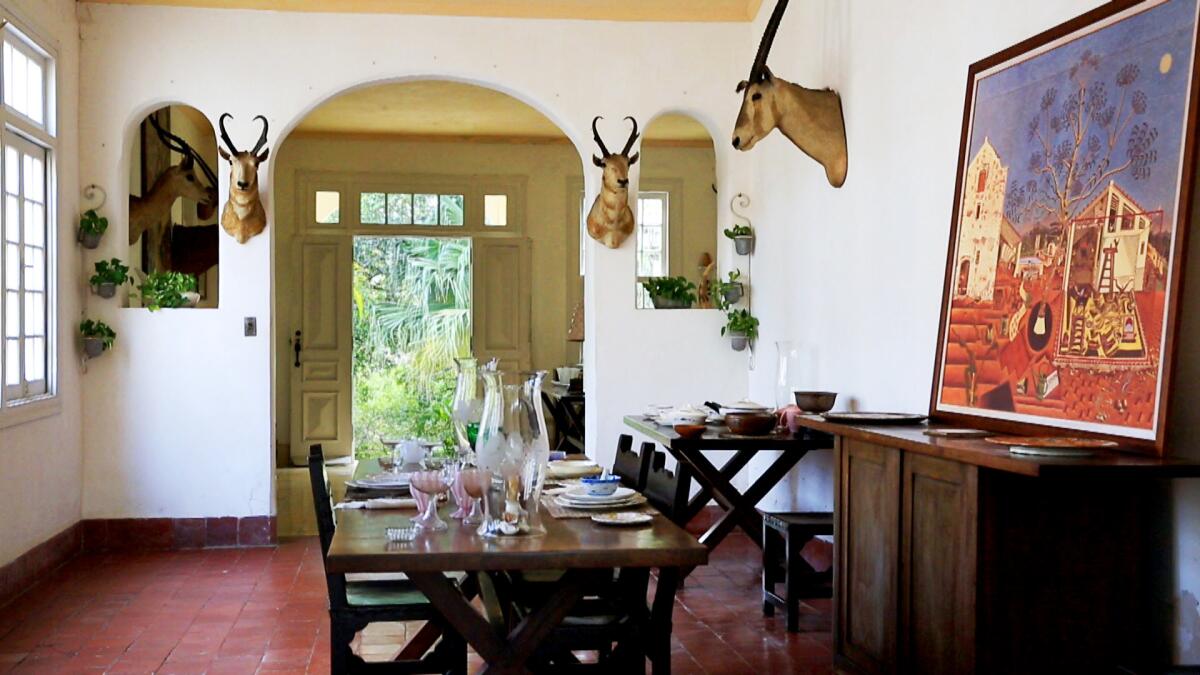Papa Hemingway’s comfortable, easygoing homestead in Cuba

Interior of Ernest Hemingway house near Havana, Cuba, on May 5, 2015.
From the gentle heights behind the house, over the tops of tropical trees, you can see the modest skyline of Havana and the blue sea beyond, fading into sky.
That vista gave this homestead its name: Finca Vigía — Lookout Farm. This is where American author Ernest Hemingway lived and wrote from 1939 to 1960.
It’s a one-story, cream-colored, stucco villa built in the 1880s — not big, just comfortable, the kind of easygoing place that would suit a hillside in Italy’s Tuscany as well as it does this one in Cuba.
CUBA TRAVEL GUIDE: Photos | Cars | What you need to know
It certainly suited the author. Hemingway loved Cuba and the Cuban people, and they continue to love him back. “The Old Man and the Sea,’’ his novel that won the 1954 Nobel Prize for literature, was set in Cuba, written in Cuba and is still taught in Cuban schools.
Even so, Hemingway doesn’t seem to have been here much. But then, he wasn’t anywhere much.
He was incessantly active, bouncing from Spain to New York to Key West, Fla., to Africa to Montana, going hunting here, fishing there, usually in the company of old friends, always ready to sit down, grab a glass and talk.
But that restlessness had a price. Hemingway was only 60 when the Cuban Revolution succeeded in 1959, but he was already failing — physically and mentally —fighting depression and paranoia, old injuries, too many years of drinking.
The next year, Mary Hemingway, his fourth wife, took him back to the United States, where he was given electroshock treatments for depression. Improvements were slight and didn’t last. In Idaho, just shy of his 61st birthday, Hemingway shot himself in the head.
His suicide was inevitable, one of the Finca staff said: “He couldn’t write anymore,’’ and that was the only thing he really cared about.
Today’s visitors must peek through the windows; they can’t walk through the house. And the Cuban staff — mostly women, mostly young — keeps watch to make sure nobody tries.
It’s because this is more than a house museum. It’s a national shrine. Cuba has preserved Finca Vigía so perfectly that you half expect the writer to be in there somewhere, working just out of sight.
Two big chintz-covered armchairs are still angled toward each other in the living room; the drinks table is between them, and virtually every other possession, souvenir and memento is right where Hemingway left it, from the African antelope heads on the dining-room walls to the 9,000 books on the library shelves.
He must have planned to come back, the staffer said: “He left behind all his books! What writer would leave his books?’’
Info: Finca Vigía is open 10 a.m.-4 p.m. Mondays-Saturdays and 9 a.m.-1 p.m. Sundays. Sometimes closed for maintenance, so check before you go. Admission is about $5, payable in Cuban convertible currency (CUCs).
A second Hemingway museum is Room 511 in the Ambos Mundos Hotel on Calle Obispo in Old Havana. It’s preserved as it was when he stayed there, before he bought Finca Vigía. Check with the hotel for hours. Admission is about $2, payable in CUCs.
More to Read
Sign up for The Wild
We’ll help you find the best places to hike, bike and run, as well as the perfect silent spots for meditation and yoga.
You may occasionally receive promotional content from the Los Angeles Times.






